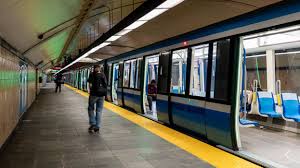The STM: Advancements and Importance in Public Transport

Introduction
The Société de transport de Montréal (STM) plays a crucial role in the daily lives of millions of residents and visitors in Montreal, Canada. As the primary public transport agency serving the city, the STM provides essential services that connect neighborhoods, foster economic growth, and contribute to environmental sustainability. With recent changes and innovations, the STM is more relevant than ever as urban areas continue to evolve and grapple with the challenges of transportation efficiency and accessibility.
Recent Developments
In 2023, the STM has announced several initiatives aimed at enhancing user experience and promoting sustainable transport options. Notably, the introduction of the new electric bus fleet has marked a significant step towards reducing carbon emissions. By 2025, the STM plans to transform 40% of its fleet to electrically powered vehicles, which is in line with Montreal’s environmental goals.
Further, the STM has improved its mobile application to offer real-time tracking of buses and metro services, providing users with up-to-date information on their travel options. This enhancement aims to increase ridership among tech-savvy commuters who prioritize convenience in their transportation choices.
Challenges Ahead
Despite these advancements, the STM continues to face challenges, particularly related to funding and infrastructure maintenance. In mid-2023, the STM reported that repairs and upgrades to aging metro stations are essential to ensure that the system remains safe and efficient. The agency is currently advocating for more government funding to address these urgent needs.
Moreover, ridership continues to fluctuate post-pandemic, as many individuals have shifted to remote working setups or alternative modes of transport. The STM has initiated campaigns aimed at re-engaging residents by highlighting the benefits of public transport, not only in terms of cost but also in reducing urban traffic congestion.
Conclusion
The future of public transport in Montreal heavily relies on institutions like the STM, adapting to new technologies, and addressing infrastructural challenges. The agency’s shift towards greener transport solutions and enhanced user services exemplifies a commitment to improving the overall quality of urban life. As city planners continue to strategize for a sustainable future, the STM stands at the forefront, aiming to meet the evolving needs of its community while fostering a more sustainable environment. In the coming years, successful collaboration between governmental bodies and transportation agencies will be essential for navigating the future landscape of urban transport.




